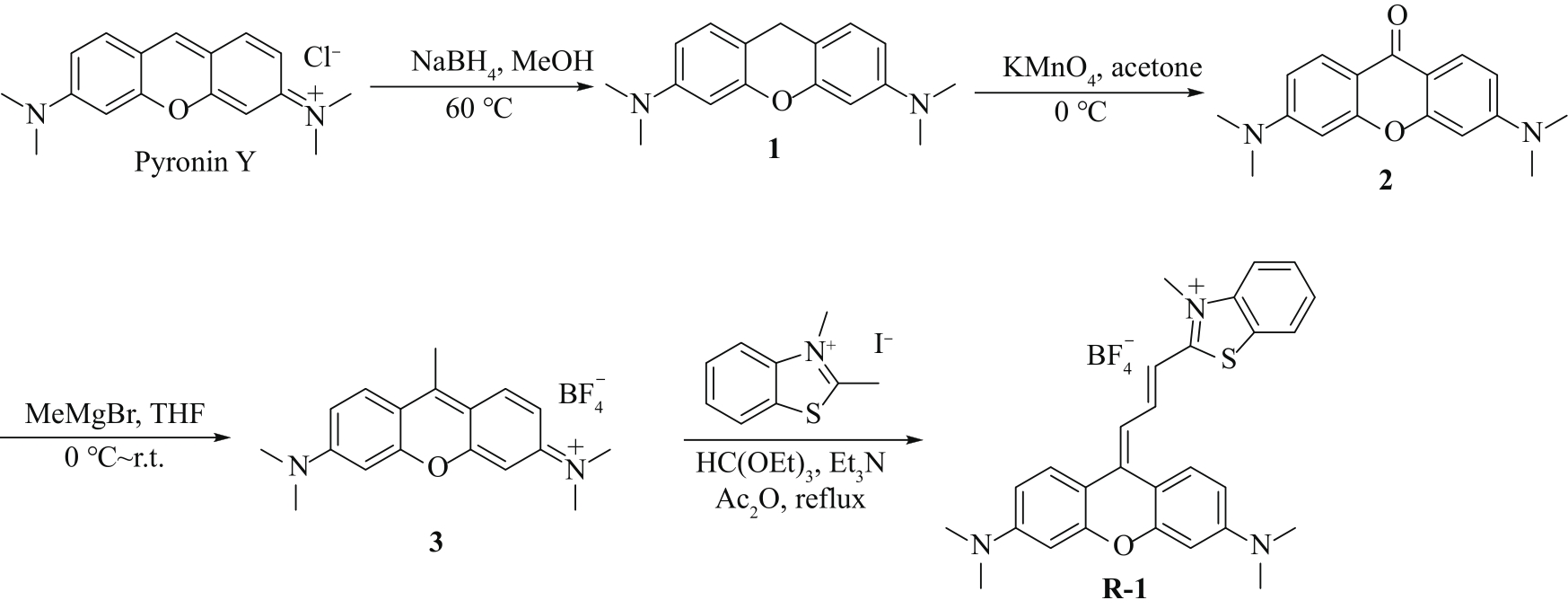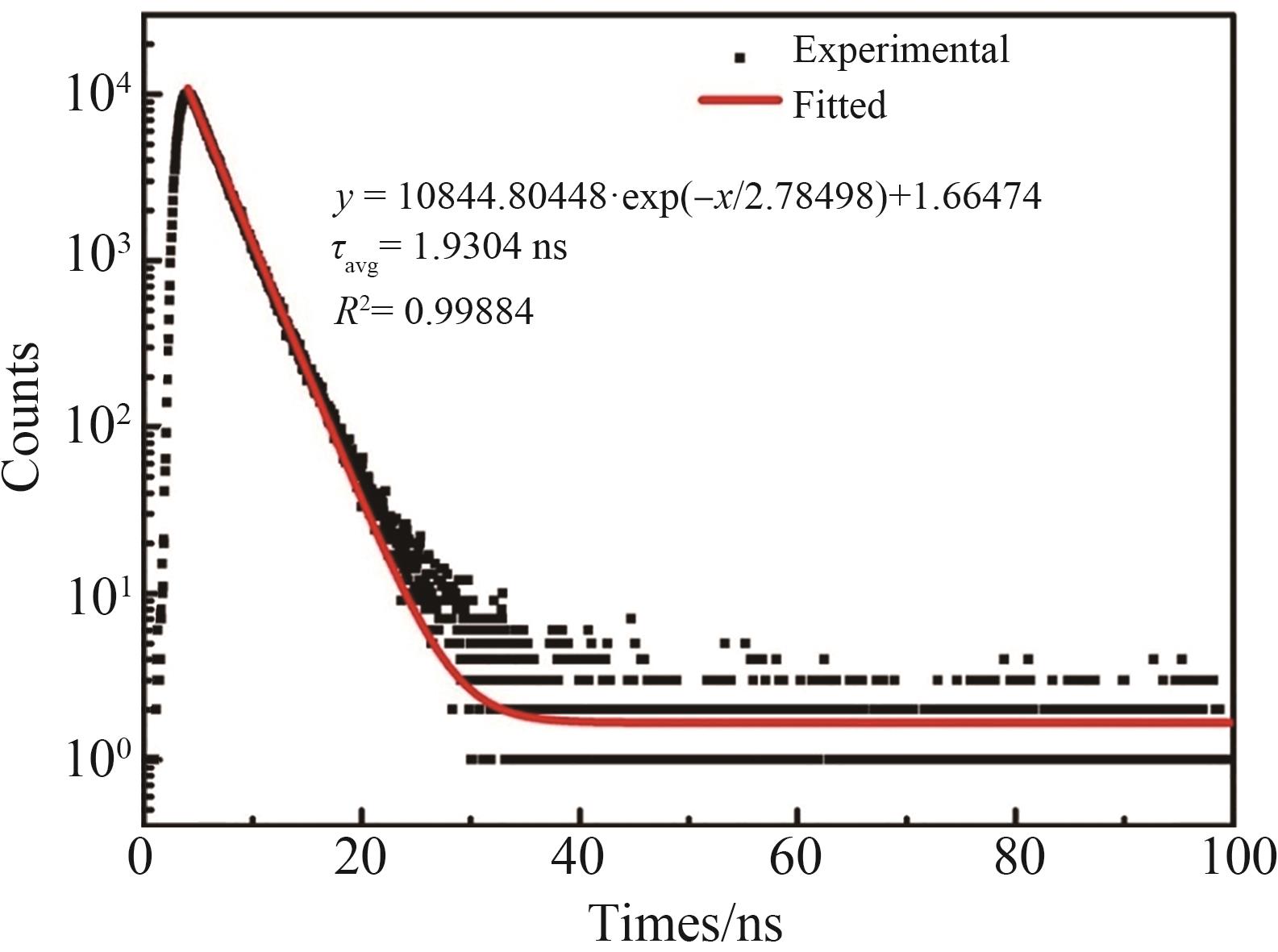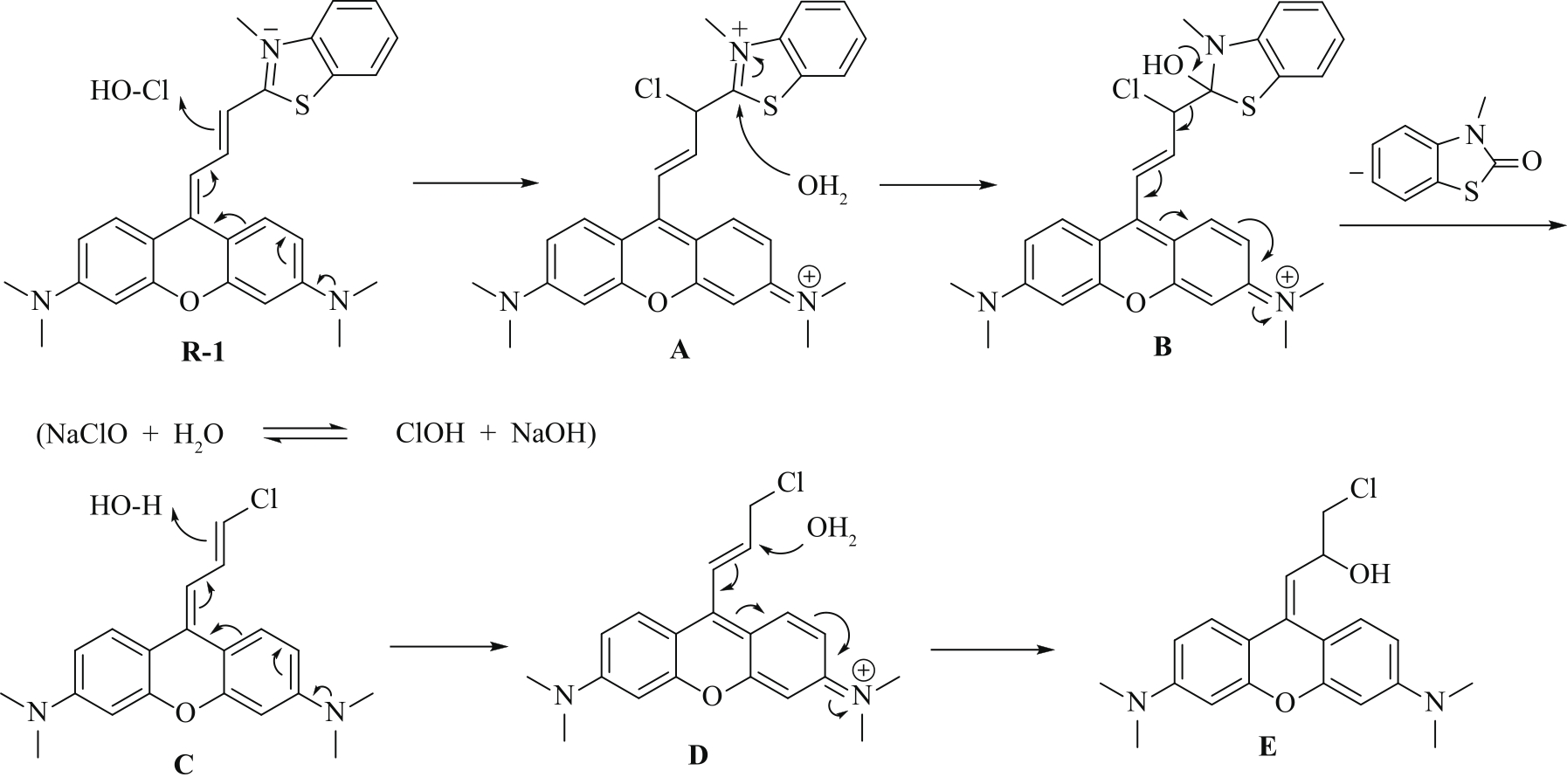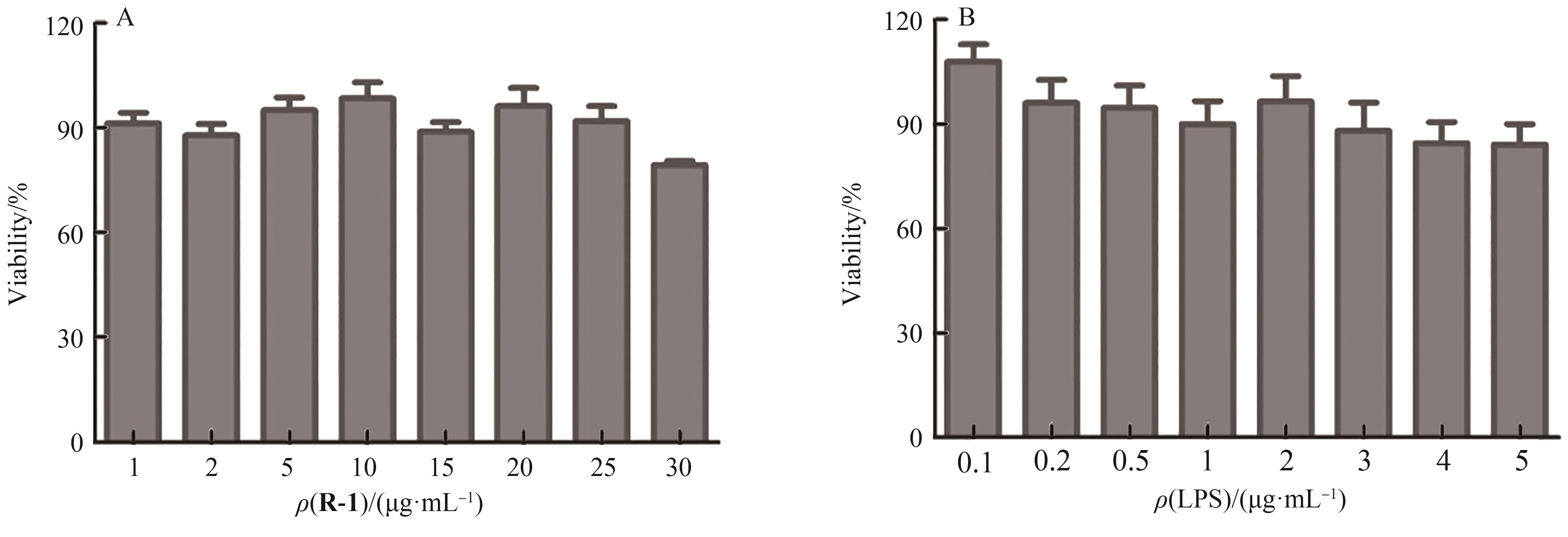
Chinese Journal of Applied Chemistry ›› 2022, Vol. 39 ›› Issue (12): 1903-1911.DOI: 10.19894/j.issn.1000-0518.220071
• Full Papers • Previous Articles Next Articles
Recognition of ClO- and Cellular Imaging with Xanthene-based Fluorescent Probes
Si-Wei YU1,2, Liang-Peng WANG1,2, Ri-Zhe JIN1, Chuan-Qing KANG1,2( )
)
- 1.Laboratory of Polymer Composite and Engineering,Changchun Institute of Applied Chemistry,Chinese Academy of Sciences,Changchun 130022,China
2.University of Science and Technology of China,Hefei 230022,China
-
Received:2022-03-15Accepted:2022-07-23Published:2022-12-01Online:2022-12-13 -
Contact:Chuan-Qing KANG -
About author:kangcq@ciac.ac.cn
-
Supported by:the Science and Technology Project of Jilin Province, China(20210401164YY)
CLC Number:
Cite this article
Si-Wei YU, Liang-Peng WANG, Ri-Zhe JIN, Chuan-Qing KANG. Recognition of ClO- and Cellular Imaging with Xanthene-based Fluorescent Probes[J]. Chinese Journal of Applied Chemistry, 2022, 39(12): 1903-1911.
share this article
Add to citation manager EndNote|Ris|BibTeX
URL: http://yyhx.ciac.jl.cn/EN/10.19894/j.issn.1000-0518.220071
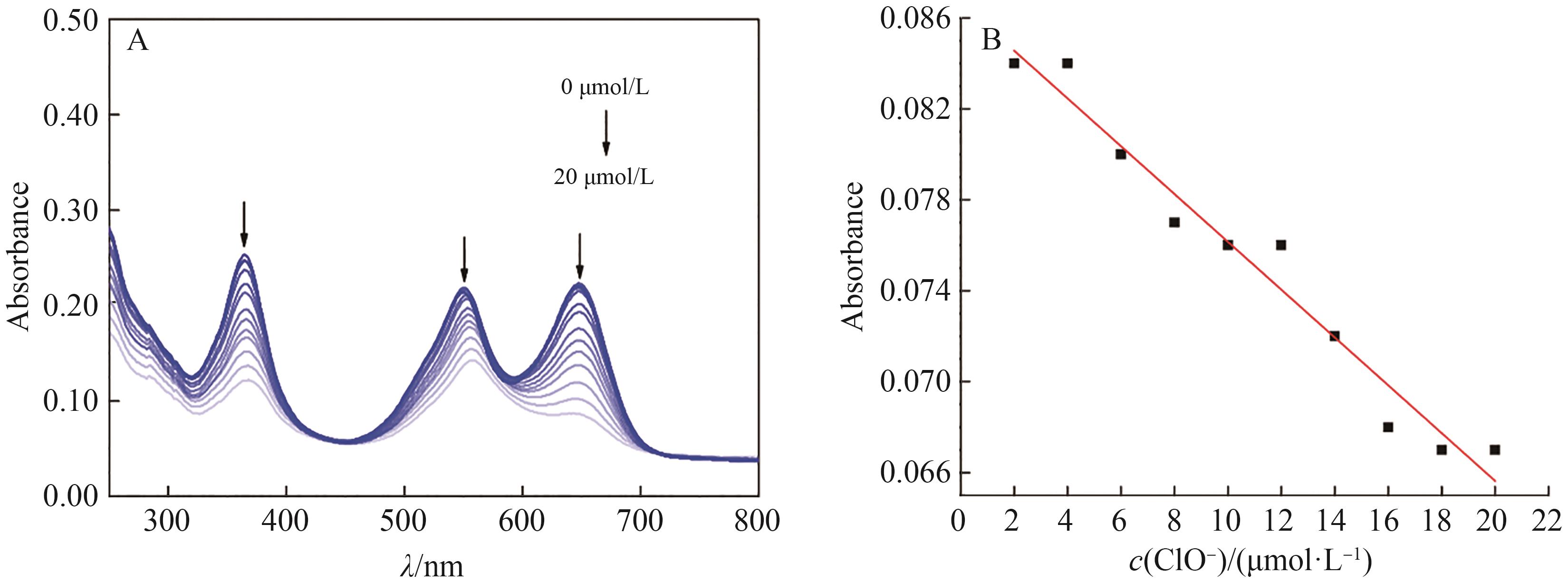
Fig.2 (A) UV-Vis absorption spectra of probe R-1 with different concentrations of sodium hypochlorite in methanol/water; (B) A linear plot of the UV absorption at 650 nm versus concentrations of ClO-
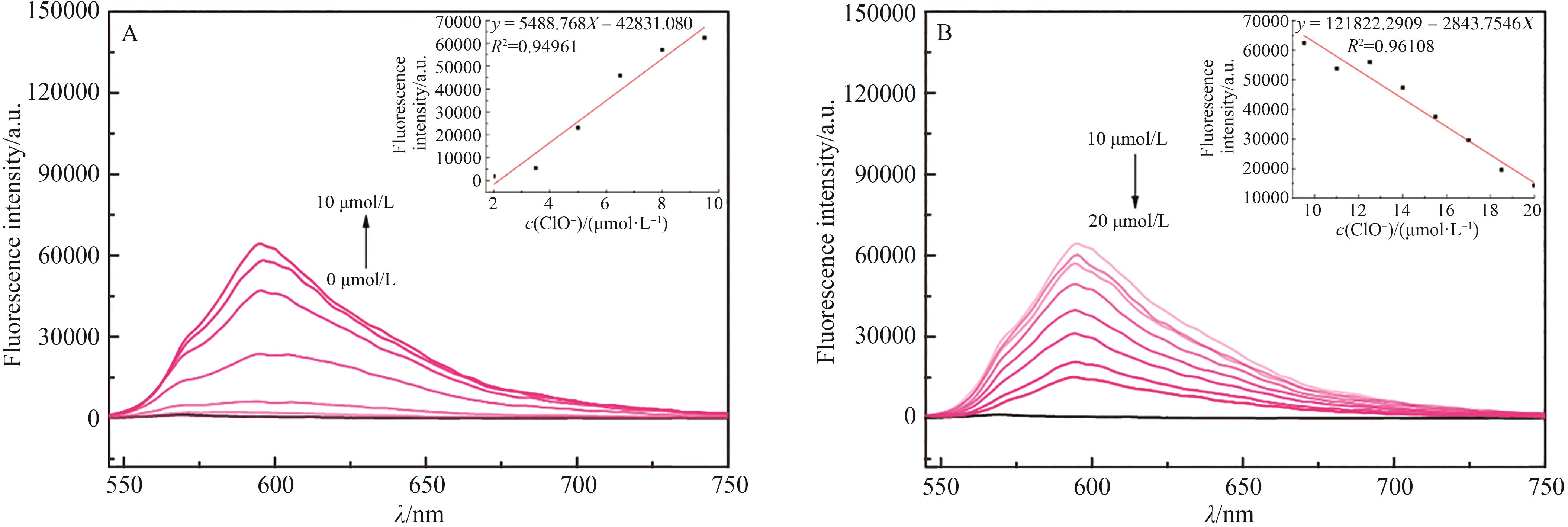
Fig.3 Fluorescence spectra of probe R-1 (10 μmol/L) in response to various concentrations of ClO- (0~20 μmol/L) in methanol/water solutions(A) Concentration of ClO- increased from 0 μmol/L to 10 μmol/L; (B) Concentration of ClO- increased from 10 μmol/L to 20 μmol/L; Inset: linear plots of the fluorescence intensities of probe R-1 at 600 nm versus concentrations of ClO-
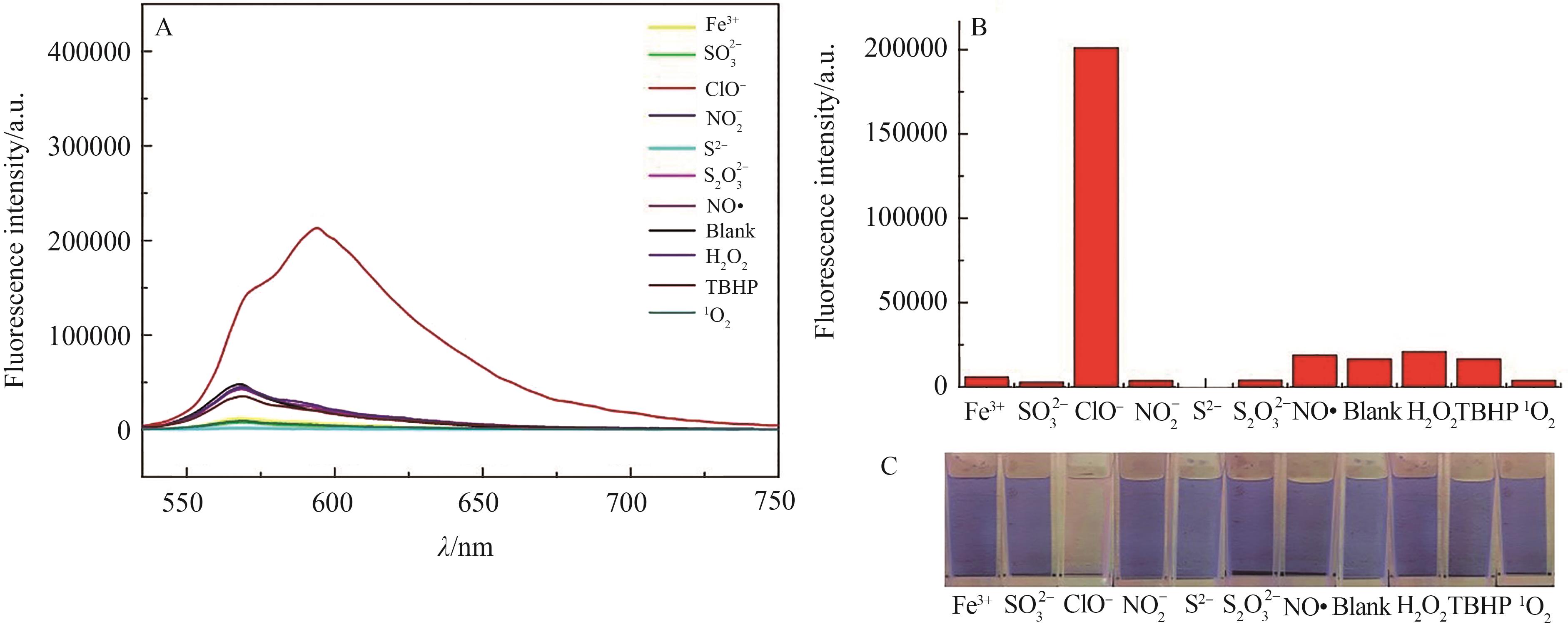
Fig.5 Selective recognition of probe R-1 to ClO- in methanol/water solution(A) Fluorescence spectra of probe R-1 (10 μmol/L) in the presence of ions and reactive oxygen species in methanol/water; (B) Fluorescence intensity of probe R-1 at emission wavelength of 600 nm in the presence of ions and reactive oxygen species; (C) Color of probe R-1 in the presence of ions and reactive oxygen species; Concentration of ClO- was 10 μmol/L, others were 100 μmol/L
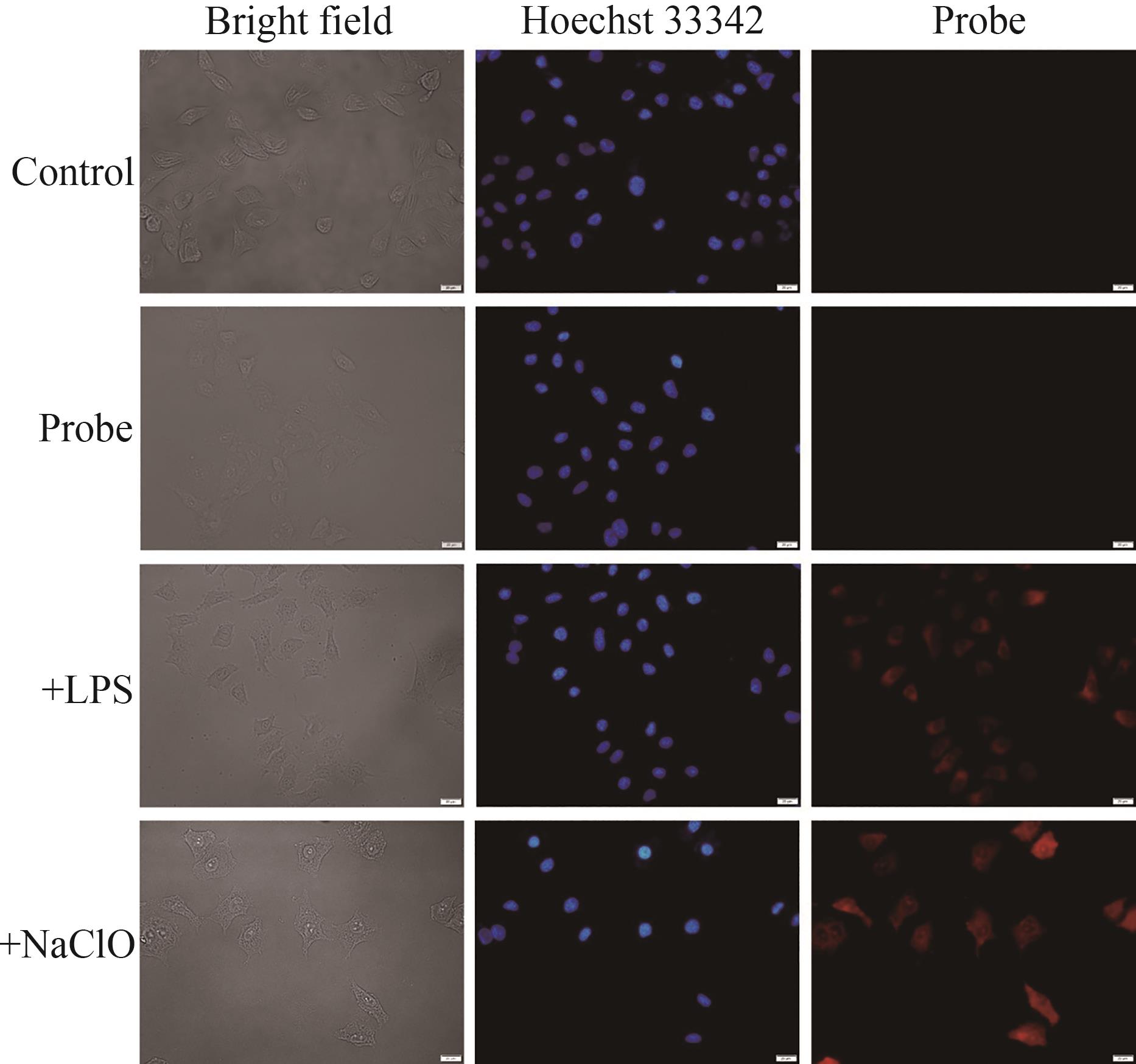
Fig.9 Fluorescence imaging of probe R-1 in A549 cell line(scale bar: 20 μm)First row: A549 cells stained with Hoechst 33342; Second row: A549 cells stained with probe R-1 and Hoechst 33342; Third row: A549 cells stained with probe R-1 and Hoechst 33342 after incubated with LPS (1 μg/mL); Fourth row: A549 cells were stained with probe R-1 and Hoechst 33342 after incubated with sodium hypochlorite aqueous solution (5 μmol/L)
| 1 | SIES H, BELOUSOV V V, CHANDEL N S, et al. Defining roles of specific reactive oxygen species(ROS) in cell biology and physiology[J]. Nat Rev Mol Cell Biol, 2022, 23: 499-515. |
| 2 | ASHTON T D, JOLLIFFE K A, PFEFFER F M. Luminescent probes for the bioimaging of small anionic species in vitro and in vivo[J]. Chem Soc Rev, 2015, 44(14): 4547-4595. |
| 3 | WU D, SEDGWICK A C, GUNNLAUGSSON T, et al. Fluorescent chemosensors: the past, present and future[J]. Chem Soc Rev, 2017, 46(23): 7105-7123. |
| 4 | QIAO W, YAO P, CHEN Y, et al. Squaraine-based AIEgens for reversible mechanochromism, sensitive and selective hypochlorite detection and photostable far-red fluorescence cell imaging[J]. Mater Chem Front, 2020, 4: 2688-2696. |
| 5 | YANG Y, YIN C, HUO F, et al. Simple 1,8-diaminonaphthalene-based fluorescence chemosensor for hypochlorites and its practical application[J]. Sens Actuators B: Chem, 2014, 199: 226-231. |
| 6 | WU L, WU I C, DUFORT C C, et al. Photostable ratiometric pdot probe for in vitro and in vivo imaging of hypochlorous acid[J]. J Am Chem Soc, 2017, 139(20): 6911-6918. |
| 7 | BEST Q A, SATTENAPALLY N, DYER D J, et al. pH-dependent Si-fluorescein hypochlorous acid fluorescent probe: spirocycle ring-opening and excess hypochlorous acid-induced chlorination[J]. J Am Chem Soc, 2013, 135(36): 13365-13370. |
| 8 | YUAN L, LIN W, CHEN B, et al. Development of FRET-based ratiometric fluorescent Cu2+ chemodosimeters and the applications for living cell imaging[J]. Org Lett, 2012, 14(2): 432-435. |
| 9 | ORDEIG O, MAS R, GONZALO J, et al. Continuous detection of hypochlorous acid/hypochlorite for water quality monitoring and control[J]. Electroanalysis, 2005, 17(18): 1641-1648. |
| 10 | DONG W, SUN C, SUN M, et al. Fluorescent copper nanoclusters for the iodide-enhanced detection of hypochlorous acid[J]. ACS Appl Nano Mater, 2019, 3(1): 312-318. |
| 11 | YANG X, WANG T, GUO J, et al. Dietary flavonoids scavenge hypochlorous acid via chlorination on A- and C-rings as primary reaction sites: structure and reactivity relationship[J]. J Agric Food Chem, 2019, 67(15): 4346-4354. |
| 12 | HUANG T, YAN S, YU Y, et al. Dual-responsive ratiometric fluorescent probe for hypochlorite and peroxynitrite detection and imaging in vitro and in vivo[J]. Anal Chem, 2022, 94(2): 1415-1424. |
| 13 | CHO M, NGUYEN V N, YOON J. Simultaneous detection of hypochlorite and singlet oxygen by a thiocoumarin-based ratiometric fluorescent probe[J]. ACS Meas Sci Au, 2022, 2(3): 219-223. |
| 14 | WANG L G, MUNHENZVA I, SIBRIAN-VAZQUEZ M, et al. Altering fundamental trends in the emission of xanthene dyes[J]. J Org Chem, 2019, 84(5): 2585-2595. |
| 15 | CHEN X, PRADHAN T, WANG F, et al. Fluorescent chemosensors based on spiroring-opening of xanthenes and related derivatives[J]. Chem Rev, 2012, 112(3): 1910-1956. |
| 16 | PANDEY A, KUMAR A, VISHWAKARMA S, et al. A highly specific ‘turn-on’ fluorescent detection of Mg2+ through a xanthene based fluorescent molecular probe[J]. RSC Adv, 2016, 6(8): 6724-6729. |
| 17 | ZHANG Y, MA L, TANG C, et al. A highly sensitive and rapidly responding fluorescent probe based on a rhodol fluorophore for imaging endogenous hypochlorite in living mice[J]. J Mater Chem B, 2018, 6(5): 725-731. |
| 18 | SONG Z G, YUAN Q, LV P, et al. Research progress of small molecule fluorescent probes for detecting hypochlorite[J]. Sensors, 2021, 21(19): 6326. |
| 19 | REJA S I, BHALLA V, SHARMA A, et al. A highly selective fluorescent probe for hypochlorite and its endogenous imaging in living cells[J]. Chem Commun, 2014, 50(80): 11911-11914. |
| 20 | VONDENHOFF M F, VAN DE PAVERT S A, DILLARD M E, et al. Lymph sacs are not required for the initiation of lymph node formation[J]. Development, 2009, 136(1): 29-34. |
| [1] | Jia-Mei GENG, Su-Fang MA, Wen LIU, Hai-Peng DIAO, Zhi-Fang WU, Si-Jin LI. Liver-Targeted Fluorescent Probes for Specific Detection of ONOO- in HepG2 Cells [J]. Chinese Journal of Applied Chemistry, 2023, 40(3): 441-448. |
| [2] | Song-Song XUE, Zheng-Feng XIE, Jia-Wei HE, Tian-Yi ZHANG, Bao-Ping XIA, Yu-Qin LI. Synthesis of Sulfonylhydrazone Probe with High Selectivity and Rapid Identification of Hg(Ⅱ) Ion and Its Application in Adsorption [J]. Chinese Journal of Applied Chemistry, 2022, 39(5): 760-768. |
| [3] | Song-Tao ZHANG, Ying-Hui WANG, Hong-Jie ZHANG. Nd3+ Sensitized Fluorescent Nanoprobes for Vascular Imaging in the Second Near Infrared Window [J]. Chinese Journal of Applied Chemistry, 2022, 39(4): 685-693. |
| [4] | Rui HUANG, Chang-Qing YE, Ya-Jun LI, Mong-Feng CHIOU, Da-Liang LI, Hong-Li BAO. Progress of Mitochondria⁃Targeted Near⁃Infrared HClO/ClO- Fluorescent Probes [J]. Chinese Journal of Applied Chemistry, 2022, 39(3): 407-424. |
| [5] | Cheng-Lu ZHANG, Yi-Ming WANG, Zhi-Xuan REN, Lu LI, Yu-Qing LI, Fu-Lu SONG. Fluorescent Probe for Rapid Detection of H2S with Benzimidazole Naphthalimide as the Core [J]. Chinese Journal of Applied Chemistry, 2022, 39(3): 489-497. |
| [6] | HUANG Yi-Wen, WANG Li-Yan, ZHAO Bing, SONG Bo. Synthesis of Water Soluble Methoxynaphthene Hemicine for Detection of Chromium(Ⅲ) Ion [J]. Chinese Journal of Applied Chemistry, 2021, 38(11): 1503-1511. |
| [7] | CAI Fengze, XU Yongling, ZHOU Le, XU Bingsong, CHEN Hao, SUN Jianqiang, LI Di, WANG Hui. Synthesis and Properties of Red-Emitting Fluorescence Probe for Viscosity Detection [J]. Chinese Journal of Applied Chemistry, 2020, 37(4): 440-446. |
| [8] | DONG Ziyue, ZHOU Xiaoxia, ZHAO Xiaohui, YE Daying, AN Yue. A Heterocyclic Aromatic Halide Small Molecule Fluorescent Probe for the Detection of 2,4,6-Trinitrophenol [J]. Chinese Journal of Applied Chemistry, 2020, 37(3): 332-339. |
| [9] | GAO Man, HE Xin, CUI Jingnan, LIU Tao, TIAN Zhenhao, HE Shengui. A Coumarin-Based Fluorescent Probe for Rapid Detection of Endogenous Formaldehyde [J]. Chinese Journal of Applied Chemistry, 2019, 36(9): 1053-1060. |
| [10] | PAN Wenhui,LI Wen,QU Jinghan,YE Yipei,QU Junle,YANG Zhigang. Research Progress on Organic Fluorescent Probes for Single Molecule Localization Microscopy [J]. Chinese Journal of Applied Chemistry, 2019, 36(3): 269-281. |
| [11] | SU Ce, CHANG Kaishan, LI Siliang, LI Guanbin, ZHANG Hongbo, BAI Lingling. Synthesis and Properties of a Zn2+ Fluorescent Probe Based on Coumarins [J]. Chinese Journal of Applied Chemistry, 2018, 35(5): 532-537. |
| [12] | CHEN Fan, GUO Zhiqian, ZHU Weihong. Synthesis and Characterization of pH and Temperature Sensitive Polymeric Fluorescent Probe [J]. Chinese Journal of Applied Chemistry, 2018, 35(4): 401-409. |
| [13] | YIN Zhengri. A Renewable High Selective Fluorescent Probe for Hydrogen Sulfide [J]. Chinese Journal of Applied Chemistry, 2018, 35(12): 1514-1520. |
| [14] | XU Yulin,LIU Chunrong. Research Progress on Fluorescence Detection of Methionine Sulfoxide/Methionine Sulfoxide Reductases [J]. Chinese Journal of Applied Chemistry, 2018, 35(1): 21-27. |
| [15] | WANG Zhaoyun, ZHANG Ping, ZHANG Min, JIAO Lijuan. Synthesis and Properties of Quinoline Substituted Boron Dipyrromethene Based Ferric Ion Probe [J]. Chinese Journal of Applied Chemistry, 2018, 35(1): 46-52. |
| Viewed | ||||||
|
Full text |
|
|||||
|
Abstract |
|
|||||
